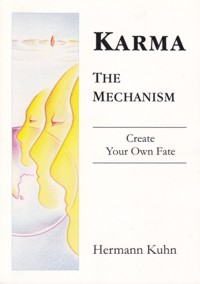
Matishrutavadhimanahparyaya kevalanam (6)
- our sensory perception (mati)
- our ability to gain knowledge from external sources (shruti)
- our extra-sensory perception (clairvoyance, telepathy) (avadhi)
- our direct perception of the consciousness of others (manah paryaya)
- omniscience (kevali jnana). (6)
Five channels give us access to knowledge. Each channel offers us knowledge of a different scope and character.
- Sensory knowledge (mati)
arises when we perceive objects and events through our five senses and the mind. Sense-perception also includes the processing of the perceived information e.g. recognition, recollection, deduction etc.
Karma that obstructs the functioning of this channel influences the clarity with which our senses and our mind perceive and understand objects and events. It also interferes with our ability to recognize objects and events, with the precision of our memory and with our capacity to learn from what we perceive.
- Knowledge from external sources (sruti)
offers far broader and deeper insights than sense-perception (mati). It alerts us to experiences we otherwise would ignore; - it establishes a connection between new experiences and our existing concepts of life; - it offers us ways to select from the multitude of potential avenues the one optimal path that brings us nearer to the realization of the values and ideals we carry deep within us.
We gain knowledge from external sources through verbal instruction and by studying books. Yet insights from these sources do not automatically arise when our senses perceive written or spoken words. We obtain access only when we make a conscious effort to understand and integrate what we have read or heard.
Karma that obstructs this channel hinders us to raise sufficient energy to comprehend meaning that exists outside the range of our sense-perception - and also beyond our prejudices and conditioning that prevent us from understanding. It may also block physical access to this channel (e.g. lack of time, no contact to suitable teachers, unavailability of the corresponding books, mere superficial or insincere interest in the subject etc.).
- Extra-sensory perception (clairvoyance and telepathy) (avadhi)
provides insights into regions of our life that are inaccessible to sense-perception or through the channel of external knowledge.
Telepathy and clairvoyance are not the transfer of single words or symbols, but an extremely fast communication of complex contents that happens on the level of feeling and intuition. The main carrier of this communication are our emotions, not our thoughts.
We experience telepathy e.g. when we steer a car and our passenger says 'go right', but means 'left', and we correctly turn left; - it is the wordless understanding between two persons; - it is the sure knowledge who is on the other side of the line when our phone rings etc.
We experience clairvoyance when we e.g. meet someone for the first time, but get the strong feeling to have known him or her all our life, - or realize instantly and intuitively that this person will be the source of trouble in the future. Further examples of this ability are premonitions, experiences of 'Déjà vu' and the certain, unquestionable knowledge that a particular path of action will or will not bring the desired results.
Karma that obstructs the functioning of this channel influences the clarity with which we perceive these insights. In its most intense form this karma prevents us from giving any credibility to our insights, - it blocks us to seriously and systematically explore and expand this ability.
- Direct perception of the consciousness of others (manah-paryaya)
is a state of consciousness where we sense the mental activity of another person immediately in our own mind. This channel is far more precise and reaches into far subtler regions than telepathy and clairvoyance (avadhi) have access to. It operates in a dimension of our consciousness where our senses and our mind play only indirect roles.
Karmas that obstruct the functioning of this channel mainly prevent the very rising of this type of insight. Direct mental perception becomes possible when all karmas that blocked this channel are either dissolved or have become inactive (latent). Once this channel is active, these karmas influence the scope and depth of what we perceive through it.
- Omniscience (kevala jnana)
While the previous four channels of knowledge register only a limited part of reality, omniscience perceives all elements and all their manifestations in the present, past and future simultaneously.
Omniscience is not caused by any external means; - it is the complete unfoldment of our consciousness by itself. It arises automatically when our consciousness is not restrained by karmic delusions any more.
We do not experience omniscience with our mind, since the mind is only a partial aspect of our consciousness and cannot direct its attention to this multitude of simultaneous events and objects.
Karmas that block this type of comprehension need to be fully dissolved to enable omniscience to rise.
The scope and precision of the advanced channels of perception far exceed the range of the senses and the mind. Yet although our Western society presently regards everything that functions without the help of the senses as suspiciously strange, this does not change the fact that the advanced channels are as available to us as the 'normal' ones. Once we dissolve the karmas that block their operation, we will use the more subtle channels in the same natural way as we employ our five senses.
 Hermann Kuhn
Hermann Kuhn
